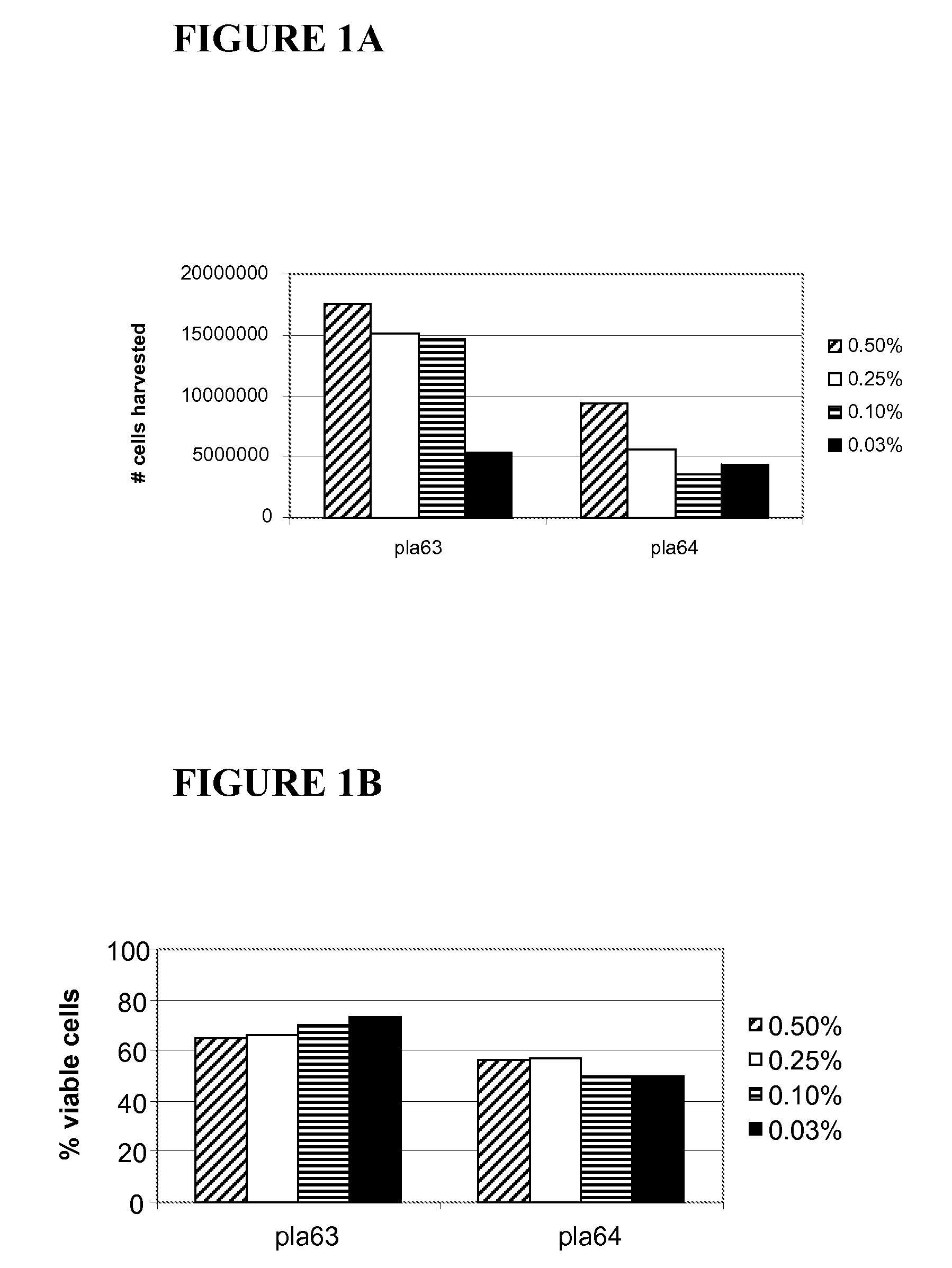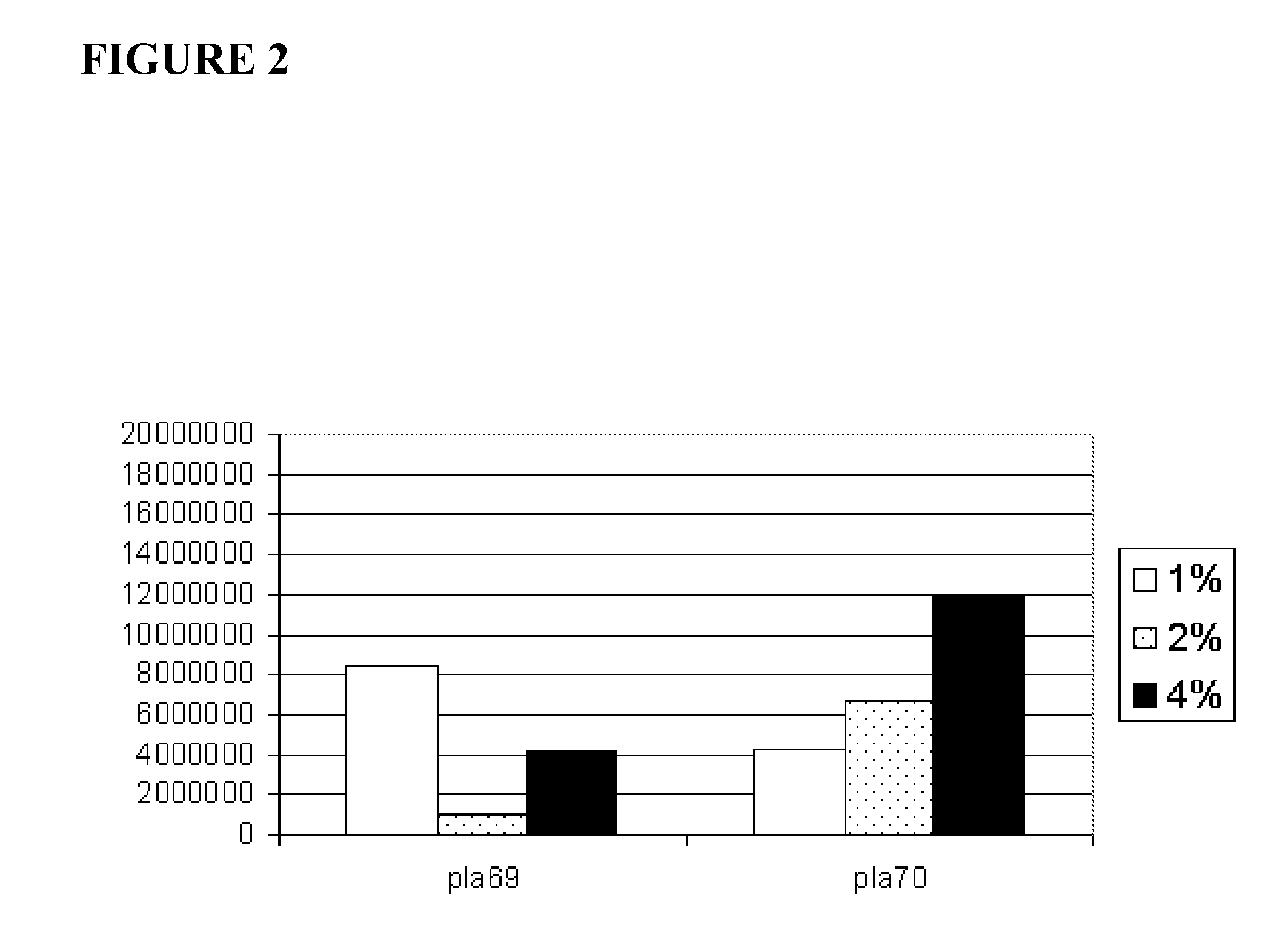Methods of isolating differentiable cells from placental-associated tissue and uses thereof
a technology of placental-associated tissue and isolating fetalderived cells, which is applied in the field of isolating differentiable fetalderived cells from various tissues, can solve the problems of difficult long-term propagation of culture the use and/or collection of truly “totipotent” stem cells, and the controversy of their use and/or collection
- Summary
- Abstract
- Description
- Claims
- Application Information
AI Technical Summary
Problems solved by technology
Method used
Image
Examples
example 1
Isolation of Differentiable Amnion-Derived Cells
[0068] A fresh human placenta was rinsed with cold sterile saline on a sieve with the amnion membrane facing up. The amniotic membrane skirt was cut on one side to prevent it from folding back onto the chorion. The incision was made at the base of the umbilical cord, and then cut radially. The amniotic membrane was gently lifted away from the chorion with tweezers. The membrane was then placed in 500 ml of chilled PBS supplemented with 100 IU / ml pen / strep, and rinsed with PBS at 4° C.
[0069] After rinsing, the amniotic membrane was sliced into thin strips while still in buffer. The strips were then incubated in about 10-15 ml of trypsin / EDTA in a TC flask for about 30 minutes at 37° C. in a CO2 incubator on a rocker. The solution and strips in the TC flask were then transferred into a Petri dish, and 10-15 ml of about 0.04% to about 4.0% collagenase P (1.6 units / ml to about 160 units / ml) in warm PBS was then added to the empty TC flas...
example 2
Transplantation of Differentiable Amnion-Derived Cells into Diabetic Mouse Model
[0072] Mice (NOD / SCID) were administered streptozocin (STZ) (200 mg / kg) to induce type I diabetes, as described in Rerup, C. and Tarding, F., Eur. J. Pharmacol. 7(1): 89-96 (July, 1969). Once the blood glucose levels were confirmed at about greater than 300 mg / dl, slow release insulin pellets (0.1 U / d / implant; LinShin Canada Inc., Toronto, Ontario, Canada) were implanted subcutaneously to ensure a euglycemic state for the first few days after the transplantation procedures.
[0073] A partial pancreatectomy was then performed on the diabetic mice, and the isolated differentiable amnion-derived cells (about 3×106 cells in 100 μL) of Example 1 were injected into the remaining portion of the pancreas. One week after the cell transplantation procedure, the subcutaneous insulin implants were removed from the mice.
example 3
Glucose Levels and c-Peptide Activity in Post-Transplant Mice
[0074] Blood glucose levels can be monitored in transplant mice after cell transplantation, e.g., 4-8 weeks post-transplantation. Blood is extracted from the tail vein or other access point at least once a week and measured. The tail is cleaned with 70% isoproponol and allowed to dry. A small drop of blood exposed by tail vein puncture is placed on, for example, a Freestyle blood glucose strip or other blood glucose biosensor, where glucose concentrations can be read. The tail is then cleaned with a 2% Betadine solution.
[0075] In addition, a fasting glucose challenge can be administered at 4, 6 and 8 weeks, post-transplantation and immediately prior to animal sacrifice. Specifically, mice are fasted for 6 hours in a clean cage at the end of the dark cycle, and 100 μl of blood is obtained through the tail vein or other access point to obtain fasting glucose baseline. Next, glucose (10 μl / g bodyweight of a 100 mg / ml stock ...
PUM
| Property | Measurement | Unit |
|---|---|---|
| density | aaaaa | aaaaa |
| density | aaaaa | aaaaa |
| size | aaaaa | aaaaa |
Abstract
Description
Claims
Application Information
 Login to View More
Login to View More - R&D
- Intellectual Property
- Life Sciences
- Materials
- Tech Scout
- Unparalleled Data Quality
- Higher Quality Content
- 60% Fewer Hallucinations
Browse by: Latest US Patents, China's latest patents, Technical Efficacy Thesaurus, Application Domain, Technology Topic, Popular Technical Reports.
© 2025 PatSnap. All rights reserved.Legal|Privacy policy|Modern Slavery Act Transparency Statement|Sitemap|About US| Contact US: help@patsnap.com


